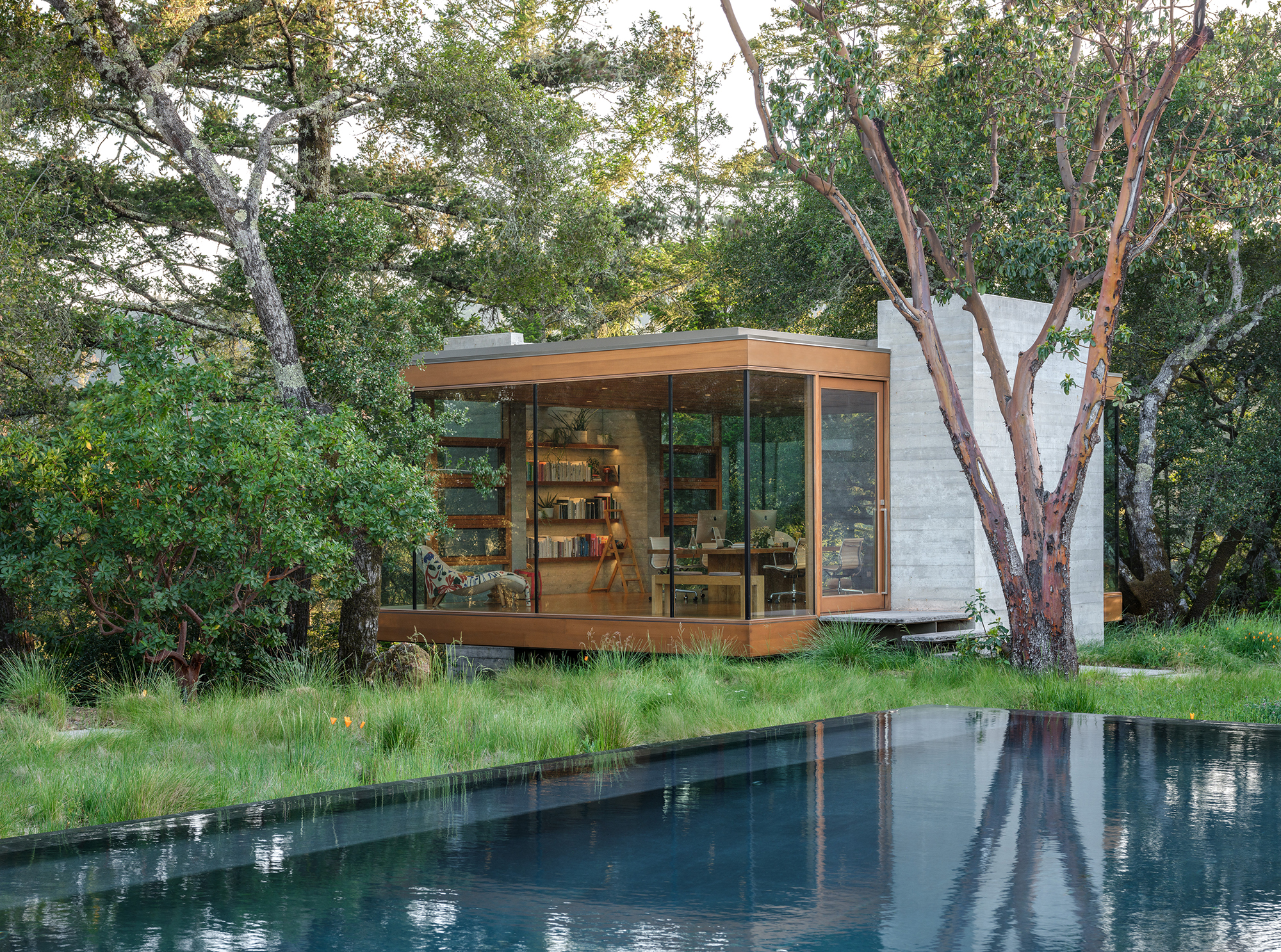
Moss Rock is a new Home Office on a 9-acre rural site overlooking a dense forest of Douglas fir, madrone and oak trees, in Healdsburg, California. Complimenting the pre-existing main house, which was constructed in 2008, Moss Rock is Net Zero and fully off-the-grid. Moss Rock has been designed to be a peaceful and quiet environment, remote from the main house, complimenting the beauty of the natural environment and providing a sublime setting for creative work. The design is as simple and timeless as a lantern set in nature – a wood and glass box, supported by two concrete core elements, floating above the land. The structural solution of lifting the building off the ground addressed two key design issues: covering (and hiding) an unsightly pre-existing concrete water storage tank, and negotiating the very steep topography, without creating an unwanted crawlspace. The new structure hovers over the existing water tank and the land on the north-east side, as it dramatically soars above the steep terrain to the south-west.
A strong basic scheme, flawlessly detailed and executed. | Exterior photos illustrate the project’s wonderful siting. | The window system is perfect. | An extremely clear accessory building/studio.